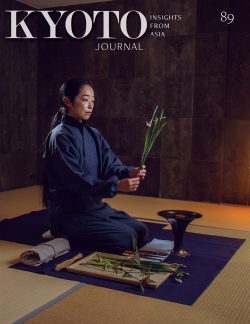Kyoto Journal x Nihon Ichiban
The name of Kiro, a workshop specializing in Hakone yosegi marquetry, rendered using the kanji characters for “wood” and “path,” seems fitting for an art form that has seen remarkable innovation over generations and whose artisans continue to forge a path forward into the future.
Hakone yosegi originated in the picturesque Hatajuku district, perched on the edge of one of the Fuji Five Lakes, towards the end of the Edo period (1600-1868). The town’s lush mountain ranges are among the most diverse in Japan, and yosegi craftsman use nature’s bounty to their advantage: the many different woods available and the range of shades they come in—from the brilliant white of mizuki dogwood to the olive-gray of hinoki cypress—are perfect for creating intricate geometric patterns. These patterns adorn plates, sandals, chopsticks, and bowls alike—imbuing these everyday objects with an air of elegance and artistry.
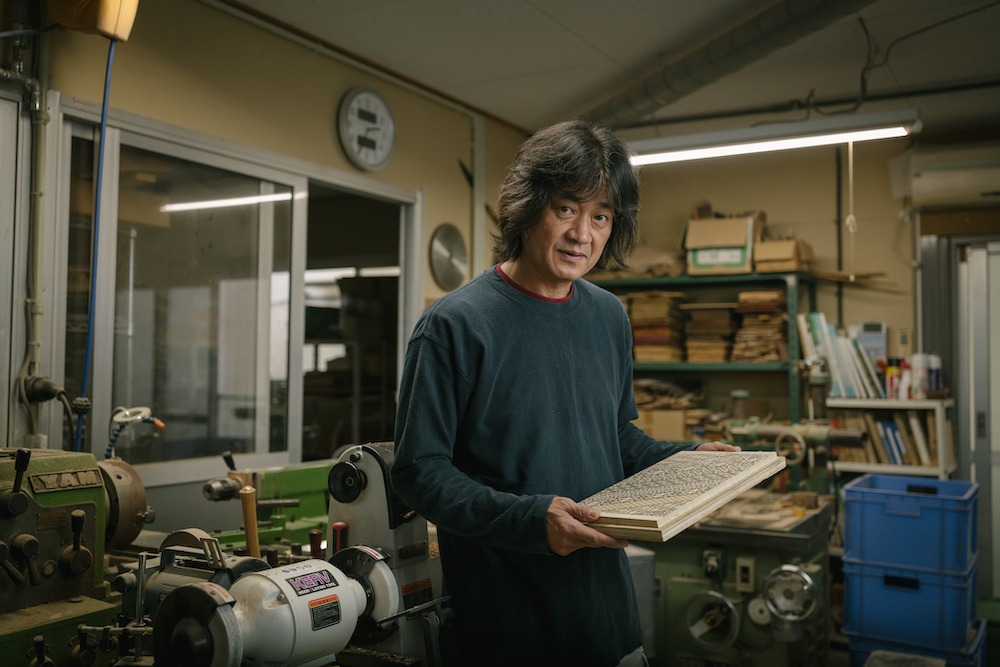
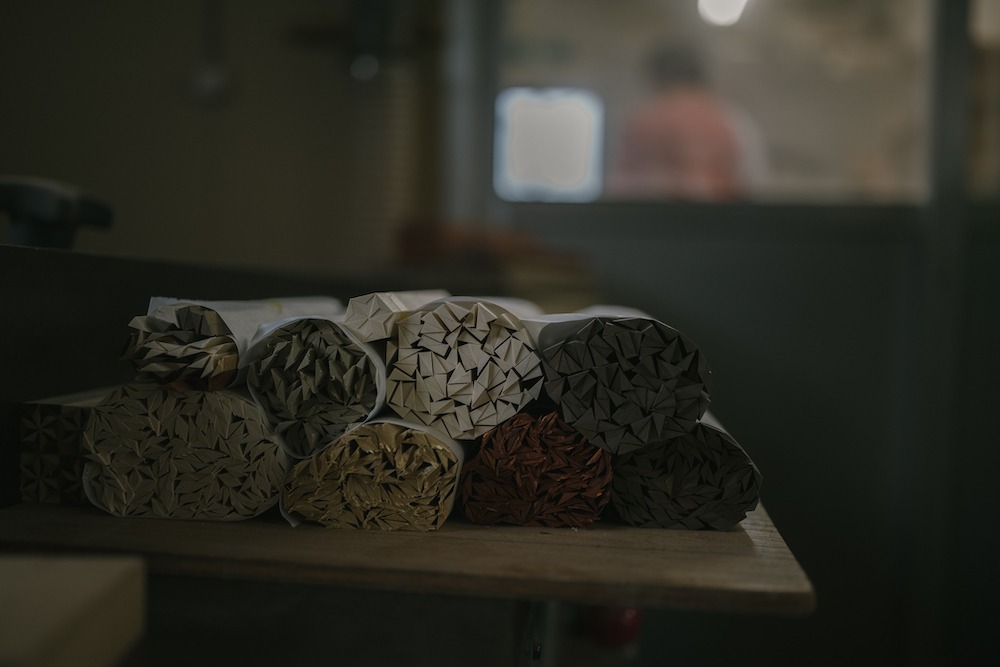
The process begins by cutting large planks of wood into rectangular sheets. The sheets are glued together, with those of certain colors layered for different thicknesses than others to form a desired pattern. Once adhered, these sheets of wood are cut at an angle to form long, thin triangular sticks. The sticks are glued together to form one block, called tanegi, forming one geometric motif. A number of tanegi are made and left to set one by one.
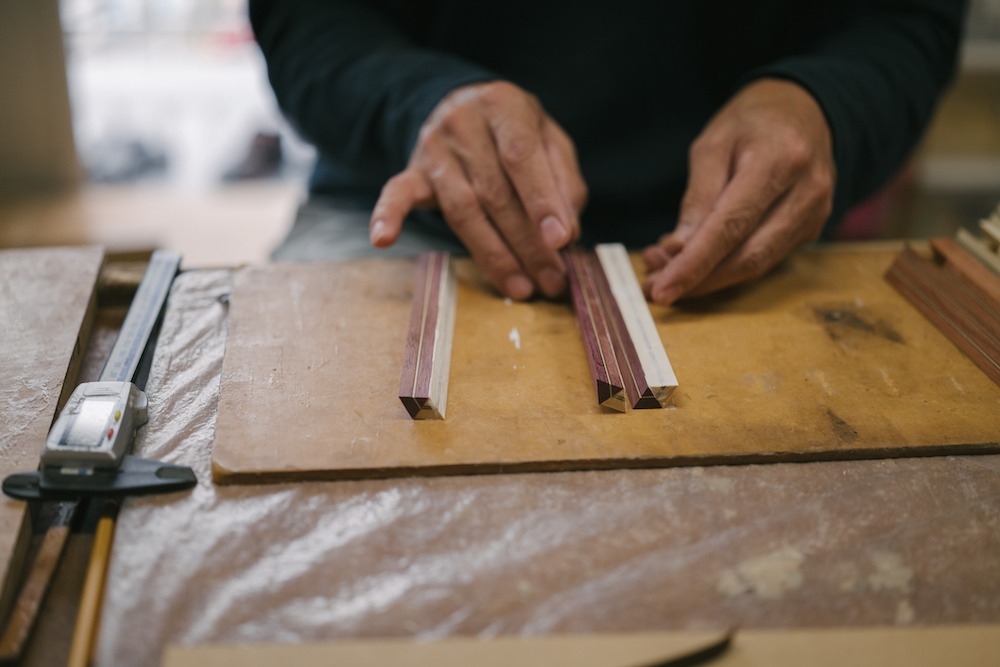
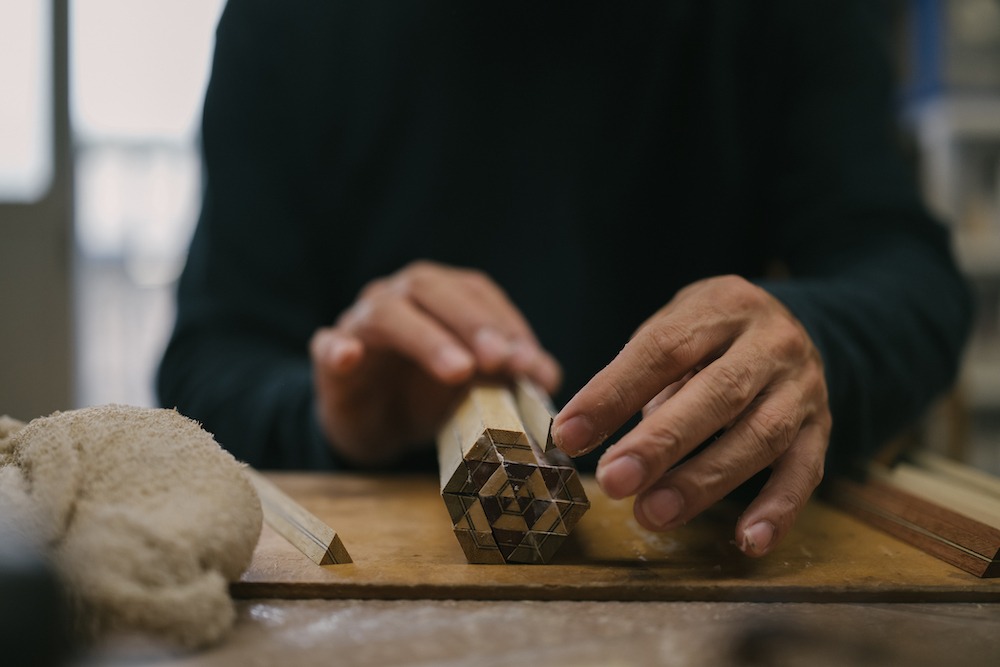
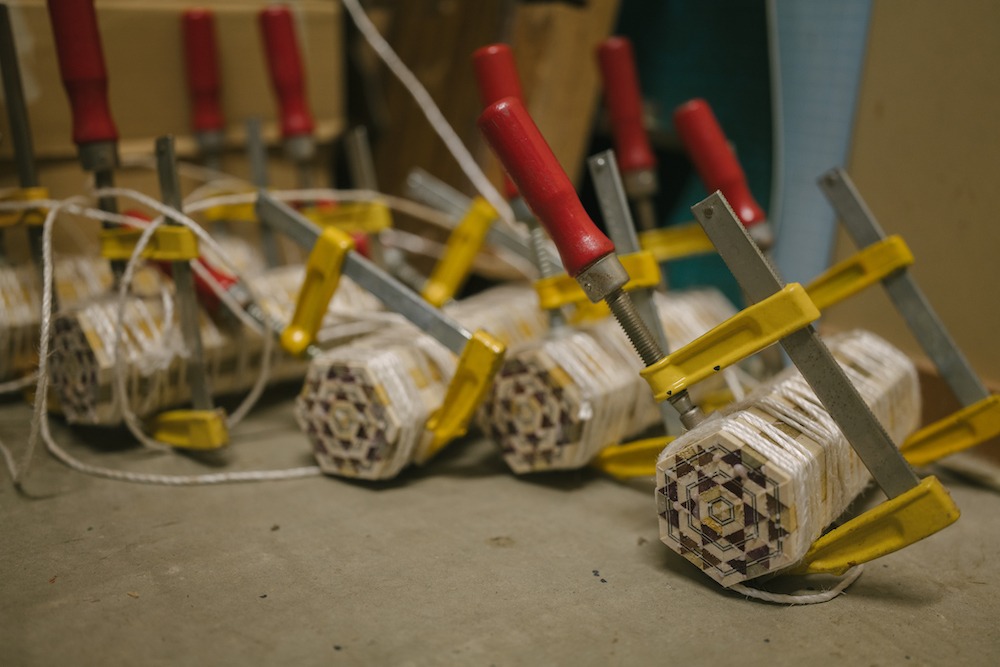
Once enough tanegi are made, the craftsman glues them all together to form a thick, patterned wooden rectangle called oyose.
Hakone yosegi’s defining feature comes to the fore at this stage, in a technique known as zuku (ズク). Using a specialized smoothing plane, the oyose’s top layer is shaved off as a 0.15 mm thin sheet. These sheets can then be glued to pieces such as trays and puzzle boxes. This progressive technique was developed by Ishikawa Nihei during the 19th century and is recognized by the Ministry of International Trade and Industry as one of Japan’s most representative crafts.
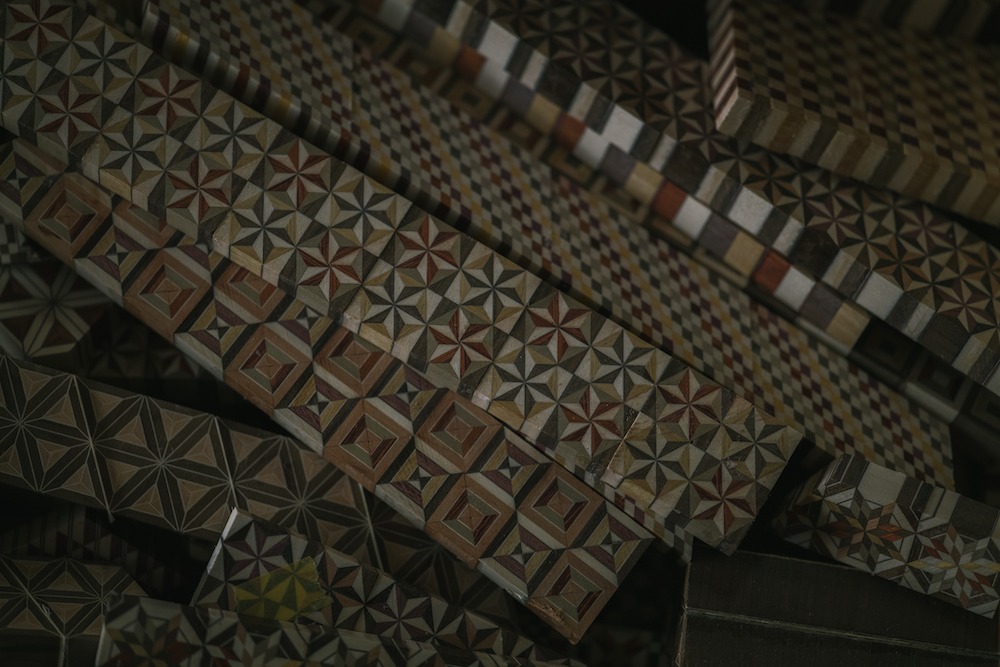
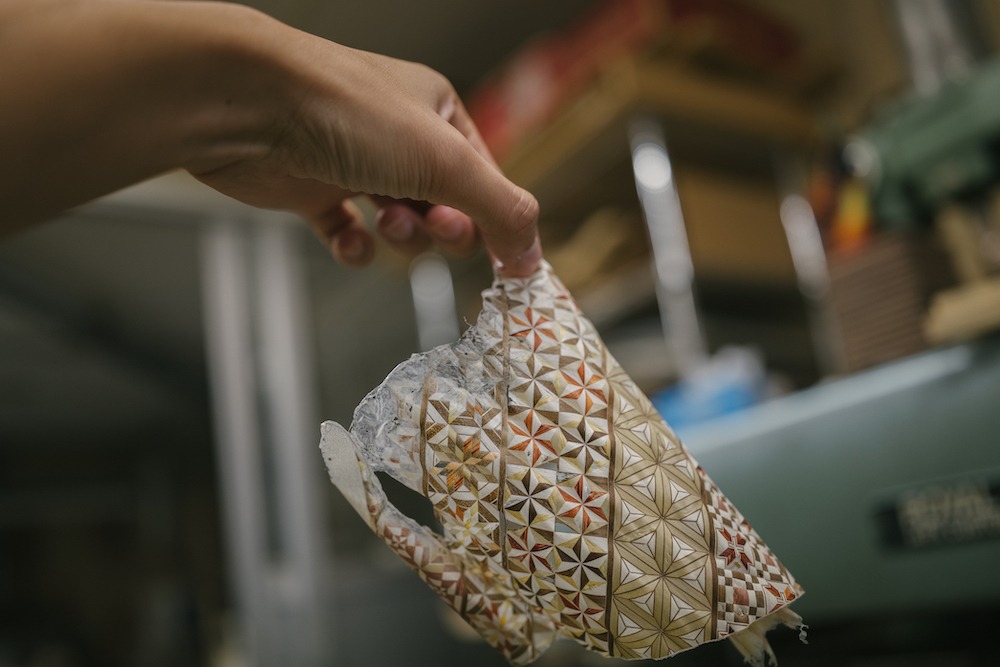
More traditional techniques practiced at Kiro, such as muku zukuri, involve carving bowls and plates out of the oyose itself. Yet methods such as these can result in the accumulation of wasted wood, making the practice of zuku more environmentally friendly as well as cost-effective. Kiro’s craftsman Tsuyuki Koichi emphasises this as another key characteristic of Hakone yosegi. Tsuyuki is a third-generation yosegi craftsman, his grandfather having been an apprentice to Ishikawa himself. After this apprenticeship, Tsuyuki’s grandfather began crafting yosegi independently.
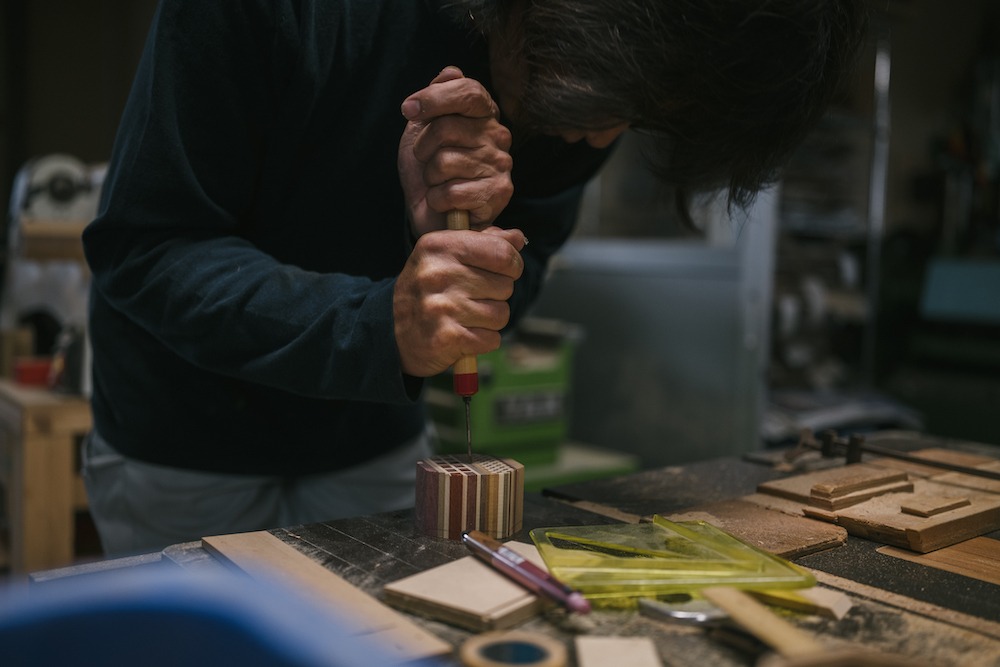
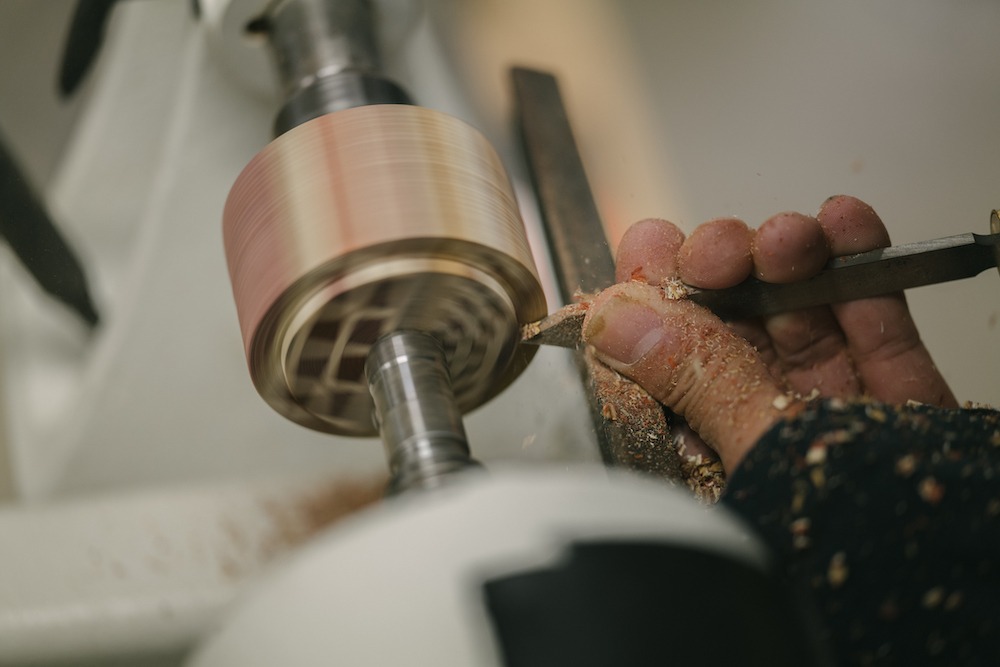
Today, Kiro maintains and furthers Hakone yosegi’s legacy. At Kiro’s specialty shop, traditional yosegi goods such as tea caddies and hina dolls can be found. Yet there are also items unique to the shop, such as music boxes and tote bags. Visitors to the workshop are also able to view demonstrations of the Hakone yosegi making process themselves.
Kiro believes the sheer multitude of wood varieties combined with the refined techniques of zuku make for an art form that embodies both harmony and contrast. Kiro is a workshop that is true to its name, both honoring the legacy of Hakone yosegi and branching forward into the future and beyond.
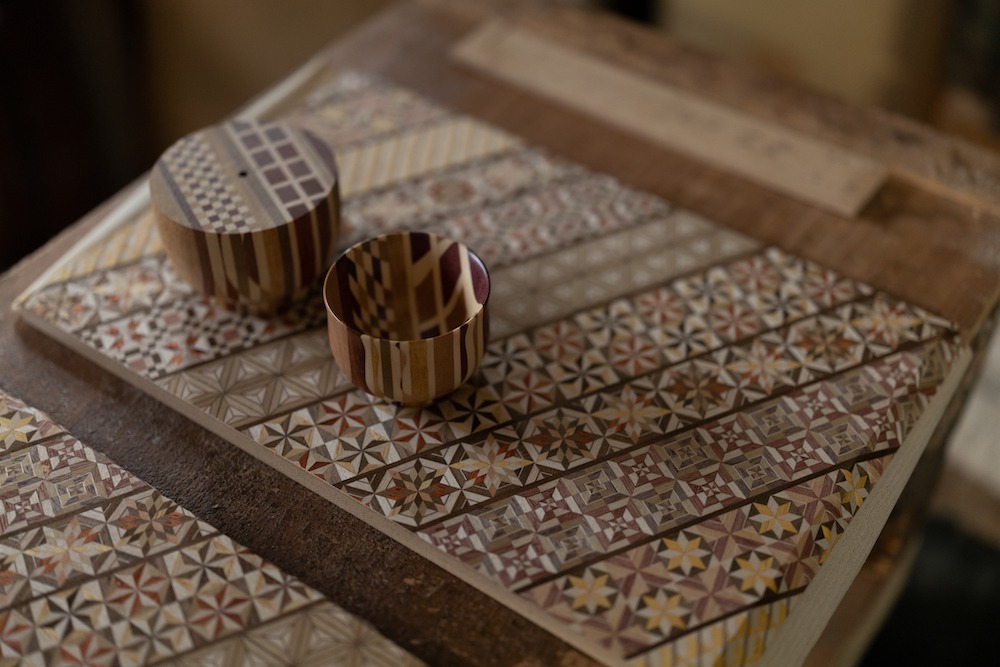
For those Kyoto Journal readers interested in purchasing from the Kiro workshop, our friends at Nihon Ichiban, an exporter of high-quality Japanese crafts, is also supplying exclusive items able to be shipped anywhere in the world: www.anything-from-japan.com
Photography by Irwin Wong www.irwinwong.com
Irwin’s new book published by Gestalten, Handmade in Japan: The Pursuit of Perfection in Traditional Crafts, is out now.
As an affiliate partner of Nihon Ichiban, Kyoto Journal NPO may earn a small commission if you purchase using the above links—at no extra cost to you. This helps us continue our all-volunteer operation and overcome the difficulties brought by the pandemic. Thank you!
Over 50% off! Read more about Japan’s shokunin culture in Issue KJ89: Craft Ecologies

Author
Lauren Kim
Author's Bio
Lauren is a writer for Kyoto Journal and an avid student of the Japanese language and culture. Her work has been published in Parallax Literary Magazine and Sandpiper. She is also a filmmaker, and her films have been screened at the Metropolitan Museum, Times Square, and Sydney, Australia.
Credits

